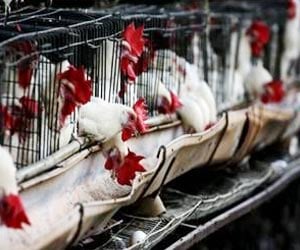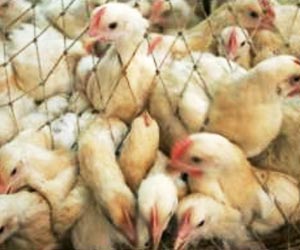Two new studies has reported that the bird flu virus has mutated so that it can more easily spread to humans and a change in a single amino acid could radically increase its virulence.
While there has been some transmission of bird flu among the family members of those first infected through close interaction with ill birds, the virus has not yet evolved to the point where it can spread easily among humans.But researchers warn that it is moving in that direction and with the wrong combination of mutations it could become a pandemic flu.
Neither study will lead to a magic bullet to cure or prevent the virus, but researchers hope they will help health officials better track and understand it.
The first study found that bird flu strains in Europe and Africa have mutated to the point where they can infect the nose and throat of humans, which can increase the spread of the disease through coughing and sneezing.
"The change we're seeing is necessary but not sufficient for bird flu to become pandemic," said lead researcher Yoshihiro Kawaoka of the University of Wisconsin-Madison.
"We don't know yet what (else) is needed. We are working on it."
Advertisement
But Kawaoka and his team examined virus samples taken from a Vietnamese patient in 2004 and found a new strain that was able to replicate in his upper respiratory system.
Advertisement
However, he cautioned that bird flu is still more of a concern for public health officials then the general public.
"Treatment and prevention are still the same," Kawaoka said in a telephone interview. "This discovery allows us to know which strain we'll have to watch."
In the second study, researchers compared viruses from the 1997 Hong Kong bird flu outbreak to that of the 1918 pandemic which killed 50 million people.
They identified a single protein present in both viruses which, when mutated by the change of a single amino acid, can dramatically increasing the virulence of the virus.
Mice infected with the mutated strain had more virus present in their lungs, lost more weight, took longer to recover and were more likely to die.
"We really are trying to dissect theses viruses and really be able to say what it is that makes it so dangerous to humans," said lead author Peter Palese of Mount Sinai School of Medicine in New York.
"In this case we were able to break it down to one amino acid in the context of the whole protein and the virus itself," Palese told AFP.
And while the mutation is no longer present in current strains of the H5N1 virus, it could resurface, he said.
Coming up with a "bullet drug" which could attack that specific amino acid and reduce the virulence of the virus is still in the realm of science fiction, Palese cautioned.
That amino acid would also not necessarily lead to the same changes in other viruses. But recognizing the specific protein - and then the specific amino acid - which leads to high mortality rates in these types two viruses could help scientists eventually develop better treatments and cures.
"These are incremental but important steps," he said.
Some 329 people have contracted bird flu since 2003, of whom 201 have died, according to the World Health Organization.
The bulk of the cases were in Indonesia, Vietnam and other Asian countries but it has also appeared in the Middle East and Nigeria.
Both studies were published in the October edition of PLoS Pathogens.
Source-AFP
GAN/N








